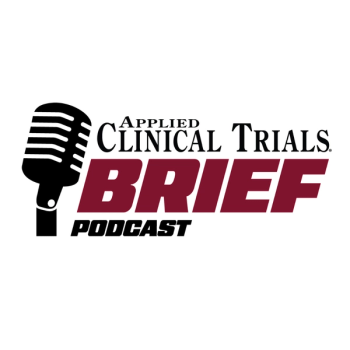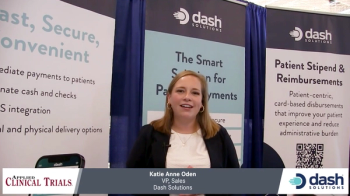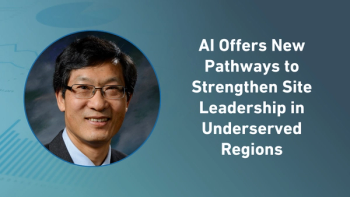
Nasal Spray Research Moves to Social Anxiety Disorder
Dr. Mark Smith, Chief Medical Officer of VistaGen Therapeutics, sits down with Moe Alsumidaie to discuss the challenges of modern psychiatric clinical trial design and implementation and their neuroactive pherine, PH48B.
The use of nasal spray for psychiatric indication has been recently discussed amongst many healthcare providers, as Janssen recently received FDA approval for its Esketamine nasal spray as an add-on therapy for treatment resistant depression. However, smaller biopharmaceutical enterprises are researching nasal sprays towards treating social anxiety disorder (SAD) an indication that has been left alone for a longtime, even though it impacts 15 million America adults. In this inteview, Dr. Mark Smith, Chief Medical Officer of VistaGen Therapeutics, will dicusss the challenges of modern physciatric clinica trial design and implementation, as well as their novel therapeutic, PH94B.
Moe Alsumidaie: VistaGen's drug candidate, PH94B, is in development as an on-demand treatment for SAD. Could you tell me more about how PH94B is targeting SAD? What is the mechanism of action?
Mark Smith: PH94B is an odorless neuroactie phrine, which is a molecule that binds to chemosensory receptors in the nose that is administered as a nasal spray. PH94B is shown in studies to relieve anxiety and fear and has objective effects on heart rate, blood pressure, and breathing. The nasal spray allows PH94B to go directly into the nasal passage and onto the chemosensroy receptors - we are essentially spritzing the molcules (PH9B) right onto the receptors. Because of this direct adiministration, we can give microgram quantities of this synthetic molecule, rather than milligram quanitities. We think PH94B has the potential to be the first on-demand treatment for social anxiety disorder. SAD is a common mental health disorder that effects about 7% of the U.S. adult population. The only treatments that are FDA-approved for SAD are sevral antidepressants. Physicians also prescribe benzodiazepines off-label, but benzodiazepines cause dowsiness/sleepiness and cognitive impairment and addiction liability. PH94B does not seem to have any of these drawbacks.
MA: VistaGen ran a Pilot Phase 3 study - what is that and why did you do it?
MS: We did a "pilot" Phase 3 study mainly because the previous work on PH94B was in the laboratory environment where individuals with SAD were brought into the laboratory settin and required to deliver a five-minute speech infront of an audience of strangers and engage in a mock social interaction in that clinic setting. Participants were gien PH94B once, and results showed that the drug relieved anxiety within minutes. However, that laboratory setting is not the real world. We at VistaGen were intrigued with the results and interested to see if they carry over from clinic to the real-world environment. These real-world situations could be socializing with colleagues, making a presentation or participting in a meeting at work, attending parties, or going to do a driver's test. How then, did PH94B do in real-world situatons? To help answer this question, a pilot Phase 3 study was conducted, primarily to gather preliminary data to assist in setting up more extensive trials in this real-world setting. The pilot Phase 3 study involved 22 patients with SAD. Participants recieved either placebo nasal spray or PH94B neuroactive nasal spray for two weeks and then crossed over to the opposite treatment for an additional two weeks. The participants recorded how anxious they felt using the Subjective Units of Distress Scale (SUDS), a visual analog scale of zero to 100. When participants were given PH94B, they had a significantly higher reduction in stress level, as compared to placebo. Thus, in the real world, with real stressors for these individual patients, PH94B also seemed to have an on-demand acute effect on anxiety. Another benefit of conducting the pilot Phase 3 study wast that it allowed for the evaluation of study design. We concluded that the cross-over design used in the pilot study is not ideal for a large Phase 3 study because patients continued to improve especially after being exposed to PH94B which made the interpretaion of the results more difficult after the second two-week period. We will likely conduct a Phase 3 with straightforward parallel design.
MA: Now that you have data to support your claim for PH94B as a treatment for social anxiety disorder, how do you plan to design the Phase 3 study, and how do you plan to overcome the challenges you just unearthed?
MS: Let's start with the stressors. Before we randomize SAD patients to drug or placebo, individuals are instructed to record, for two weeks, their stress levels in real-life situations. This requires them to be willing to confront social situations that they know make them anxious. Essentially, we are pre-selecting for people who have the courage to go out and face social situations. At this stage, we are only recording peak level anxiety to make sure they qualify to be in the study. Then, after randomization, we are recording the peak level of anxiety on drug versus placebo minus the baseline at week 4. I'm sure there is going to be a variability in the anxiety scores and the stressfulness of each situation so we will likely randomize about 100 patients in each arm, drug versus placebo. which will help mitigate some of that variability in the stress severity data. For the rater scales, we have been using the Subjective Units of Distress Scale (SUDS) to show minute-by-minute effects in the laboratory. However, in the real-world Phase 3 study, what we are trying to do is to show that on-demand treatment with PH94B affects this chronic disorder. The standard validated scaled was created by our advisor and the Principal Investigator of this study, Dr.Michael Liebowitz, the so-called Liebowitz Social Anxiety Scale. It is the validated scaled that has aways been used in studies for drugs seeking FDA approval for the treatment to SAD
MA: This study sounds pretty risky in terms of the data variability and the potential for subjectivity that could come into play. Are you going to be running an apative trial to evaluate what's happening with the study?
MS: No, we're not planning on adaptive design. With the results we have seen, we feel confident that the Phase 2 and pilot Phase 3 have indicated PH94B has an anti-anxiety effect. We are certainly making this a larger study with about 200 patients (100 per arm) versus the 22-patient number in pilot study.
MA: That's interesting. Could you tell me a bit about some of the issues that you expect to face in your larger Phase 3 study, particularly around clinical operations, and some of thsoe issues around recruitment and patient centricity?
MS: Recruitment is always an issue. We know that there a lot of these patients out there, epidemiologcially. However, how do we get them to seethe doctor, and how do we get them to participate in this trial? In previous studies, we found that something as simple as placing an ad in the subway can help recruitment. It may also be possible to reach out to these folks trough online advertising, whether it be through Facebook or other nmeans. Now, you mentioned the question about patient centricity. In some ways this medication is very patient-centric. After all, it is a medicine that the patient determines when and how to use. They may take PH94B once a week, depending on their interactions, or they may take it a couple times a day. Individuals are genuinely in control of when and how often they use PH94B nasal spray.
We haven't decided on this yet, but we're also contemplating the idea of using digital health to monitor heart rate and skin condutance.When people get into a stressful situation, their heart rate, skin conductance, and sweating may increase. We are thinking about using health watches in the study to monitor these fluctuations and evaluating if PH94B has an effect. You can even imagine if this works out, being able to monitor and recognize these changes could be kind of a trigger for the patient to say, "I'm getting stressed out by this situation. Maybe I need to take a spritz of that PH94B."
MA: When do you expect the Phase 3 study to start?
MS: Because PH94B is a novel, first-in-class drug, as there is no FDA-approved on-demand pro re nata (PRN) treatment for SAD, we want to confrm with the FDA that we are on the same page as far as the development process and protocol. We hope to get this trial started sometime in the first half of 2020. We are sincerely looking foward to moving the program forward. I think this could really help people with social anxiety disorder and positively impact their lives due to the demonstrated rapid onset of efficacy, route of administration, as-needed dosing convenience and excellent safety profile compared to existing therapeutic options.
Newsletter
Stay current in clinical research with Applied Clinical Trials, providing expert insights, regulatory updates, and practical strategies for successful clinical trial design and execution.






.png)



.png)



.png)
.png)
